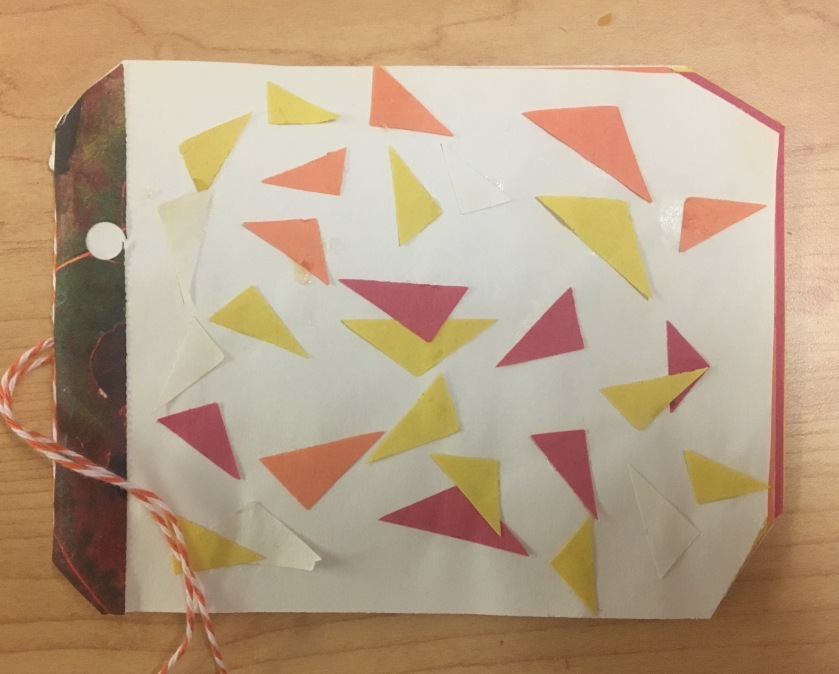


Today in class we learned about book binding. Specifically creating our own books using the three hole, and four hole stitch methods.
We created our own books by picking out different types of paper and binding them together with a needle and thread.
I chose to make three different books using both methods. The first book above was the first book I attempted to make- a three hole stitch using construction paper of different colors with a triangle design on top.
The second book I created is the second image above which shows a four stitch method with a thicker metallic perforated paper on top of a multicolor gemstone piece of printer paper. Inside the book the pages alternate between red and pink construction paper.
The third and final booklet I created is a three stitch book with an autumn leaf design on the top, and fall colored printer paper in the middle.

 What is it about?
What is it about?